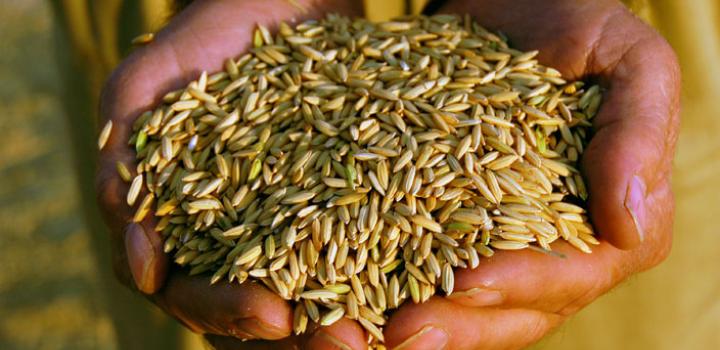Taxpayer funded research a boon to farmers
by January 21, 2019 3:05 pm 489 views

It’s been several decades since land grant universities first began developing hardier strains of rice, corn and other agricultural commodities, but the benefit to growers has been clear, according to a new study. Increased yields, better disease resistance and greater profitability are the byproducts of this taxpayer-funded research.
The study, co-authored by four University of Arkansas System Division of Agriculture experts, looks at how such programs benefit consumers around the world, as well.
“Estimating the Benefits of Public Plant Breeding Programs,” is slated to be published in an upcoming volume of the Journal of Agricultural Economics and was co-authored, in part, by Lanier Nalley, professor of agriculture economics for the department of agricultural economics and agribusiness, and Karen Moldenhauer, professor of crop, soil, and environmental science. Alvaro Durand-Morat, a research assistant professor for the Division of Agriculture, and Aaron Shew, now an assistant professor and the Wilson Chair of Agricultural Business at Arkansas State University, were also co-authors.
The study looks specifically at increases in revenue, total exports and the global welfare effects derived from the Division of Agriculture’s rice breeding program, based on data from 1983-2016. The study found that while the genetic gains provided by the program increased both the yield and quality of rice crops, providing growers with an additional $31 million in revenue annually, it also increased rice exports by about 53,000 metric tons and lowered food costs in low-income countries.
Nalley said he and his co-authors wanted to examine the broader effects of public plant breeding programs, in terms of social and economic impacts.
“I think we oftentimes think of plant breeding and increased yields and just ‘making more money for producers,’ which is a great thing, but the positive externality on that is that we feed a lot more people,” Nalley said. “Rice is a field-to-plate crop, so these gains we’re making in genetics are directly feeding people. Unlike soybeans or corn, which might go to feed livestock, then tangentially feed people, this rice directly feeds people.”
In the United States, breeding programs don’t dominate all agricultural commodities, but in wheat and rice, where the use of genetically modified organisms isn’t commercially allowed, publicly developed varieties account for roughly 60% of the rice acreage in Arkansas, Nalley said.
“Globally, it becomes a little more heterogeneous,” Nalley said, noting that rice varieties must be developed to suit specific regions. “But, for most low-income countries, public breeding is the main way increasingly successful varieties are brought to market. The research and development process itself is quite expensive, which is why it tends to become a government-funded venture.”
Moldenhauer said it takes about a decade to bring a new rice variety from its initial cross of desirable genetic traits to a finalized product ready for market.
From a rice production standpoint, the United States is a relatively small player on the world stage, Nalley said. In 2018, the United States produced about 6.9 million metric tons of rice, compared to about 143 million metric tons produced in China and 111 metric tons produced in India. However, many countries consume more than they produce, opening the market for surplus producers such as the United States, which is among the top global exporters of rice.
China customs announced earlier this month it would allow U.S. rice imports. Industry leaders have been working for a decade to open the Chinese rice market for U.S. producers, USA Rice President and CEO Betsy Ward recently told Talk Business and Politics. But, the ongoing trade war instigated by President Donald Trump has hampered those efforts, she added.
China imports about 5 million metric tons of rice each year. The Chinese consume as much rice as Arkansas produces in a year in 13 days. China will now need to post the list of approved U.S. export mills and facilities of milled rice developed in consultation between the U.S. rice industry, United States Agriculture Department’s Animal and Plant Health Inspection Service (APHIS) and China’s Agricultural Inspection Service, according to the Agriculture Council of Arkansas.
Nalley said that efforts to increase rice yields have helped to feed increasing numbers of people in low-income countries, where much of the population spends a majority of its disposable income on food. Through higher global grain stocks and competition, overall food prices have decreased in many of these areas.
“I think what’s lost in most breeding stories is the fact that we’re really helping people feed themselves,” he said. “We’ve seen that rice prices are reduced by 1% in countries such as Haiti, Nicaragua and Panama — those are very poor countries, and reducing the price of rice by 1% doesn’t sound like a lot, but when the majority of disposable income goes toward food, any reduction in food price makes a difference.”
